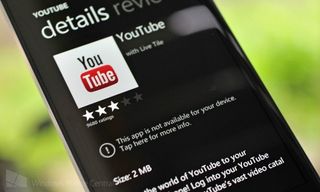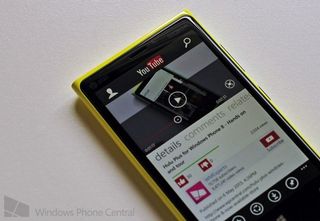Microsoft responds in detail to Google’s blocking of YouTube; cites HTML5 and unfair treatment

Last night, Windows Phone Central broke the news about the new Microsoft branded YouTube app essentially breaking. We investigated the problem and concluded that it was due to a revoked developer key. Such a scenario could only happen if Microsoft forgot to update it or if Google yanked it.
That latter situation implies that Google did not authorize the app and was taking direct action of their own by disabling the video player on all Windows Phones. Indeed, just a few hours ago this was confirmed when Microsoft said as much in a note to the press.
Now, David Howard, Corporate Vice President & Deputy General Counsel at Microsoft, has taken to TechNet, Microsoft’s blog on legal and public policy. Needless to say, the nearly 1000 word statement is chock full of information and more details on the matter, making an excellent read.
HTML5, branding and unfair requests

Presenting Microsoft’s side, which of course is expected to be biased towards themselves, Howard finally gives the details behind the current situation with Google.
It’s noted that for a few years now, Microsoft has been striving for a comparable YouTube experience that is found on the iPhone and Android—something for which we see as reasonable. Redmond reiterated that claim earlier this year soon after Windows Phone 8 launched. Google, however, was reportedly not willing to share certain data with Microsoft on to make that happen. As a result, up until April 2013, Microsoft had a much inferior YouTube experience.
This past spring, Microsoft released their version of a YouTube app and it was very well received by the community. However, Google took issue with it and asked that it be removed. Microsoft obliged with the condition that they can work with Google to release an app of comparative performance with their competitors (iOS and Android).
Microsoft agreed to Google’s terms and in version 3.2 of the YouTube app, released earlier this week, they had enabled Google’s advertisements, disabled video downloads and eliminated the ability for users to view reserved videos.
Get the Windows Central Newsletter
All the latest news, reviews, and guides for Windows and Xbox diehards.
But there was evidently one more thing Google wanted: the app to be coded in HTML5.
"It seems to us that Google’s reasons for blocking our app are manufactured so that we can’t give our users the same experience Android and iPhone users are getting. The roadblocks Google has set up are impossible to overcome, and they know it." - David HowardCorporate Vice President & Deputy General Counsel, Microsoft
Microsoft notes that this was an unusual request since iOS and Android are currently not encoded in HTML5 and moreover, after investigating whether it could be done both companies agreed that making an HTML5 app would be technically difficult and time consuming (and perhaps that was Google’s intent).
This was the breaking point as Microsoft decided to release the non-HTML5 version of the app with the intention of returning to the matter later with Google.
Other lingering issues

Other problems that Google cites are ads “based on conditions imposed by content creators” aren’t always displayed. Microsoft claims that they need more data for this, something for which Google reportedly won’t share.
Finally, Google evidently now has a problem with the branding i.e. it seems like an official Google app when it’s made by Microsoft. Another reason is that according to Google, this new app provides a “degraded experience”, something for which most users have not objected too, making it vacuous.
Where to next?

It is clear Microsoft is ratcheting up the PR war by releasing this statement. From their perspective, Google has set prejudicial requirements for Windows Phone that iOS and Android are not obliged to meet. To that end, especially the request for the app to be in HTML5, it does seem that Google here is behaving rather dishonestly.
However, we should note that Google has yet to go into as much detail and surely they have their side as well. Regardless, this dispute has clearly crossed a line and Windows Phone users are suffering at their expense.
Source: TechNet

Daniel Rubino is the Editor-in-chief of Windows Central. He is also the head reviewer, podcast co-host, and analyst. He has been covering Microsoft since 2007, when this site was called WMExperts (and later Windows Phone Central). His interests include Windows, laptops, next-gen computing, and watches. He has been reviewing laptops since 2015 and is particularly fond of 2-in-1 convertibles, ARM processors, new form factors, and thin-and-light PCs. Before all this tech stuff, he worked on a Ph.D. in linguistics, watched people sleep (for medical purposes!), and ran the projectors at movie theaters because it was fun.
